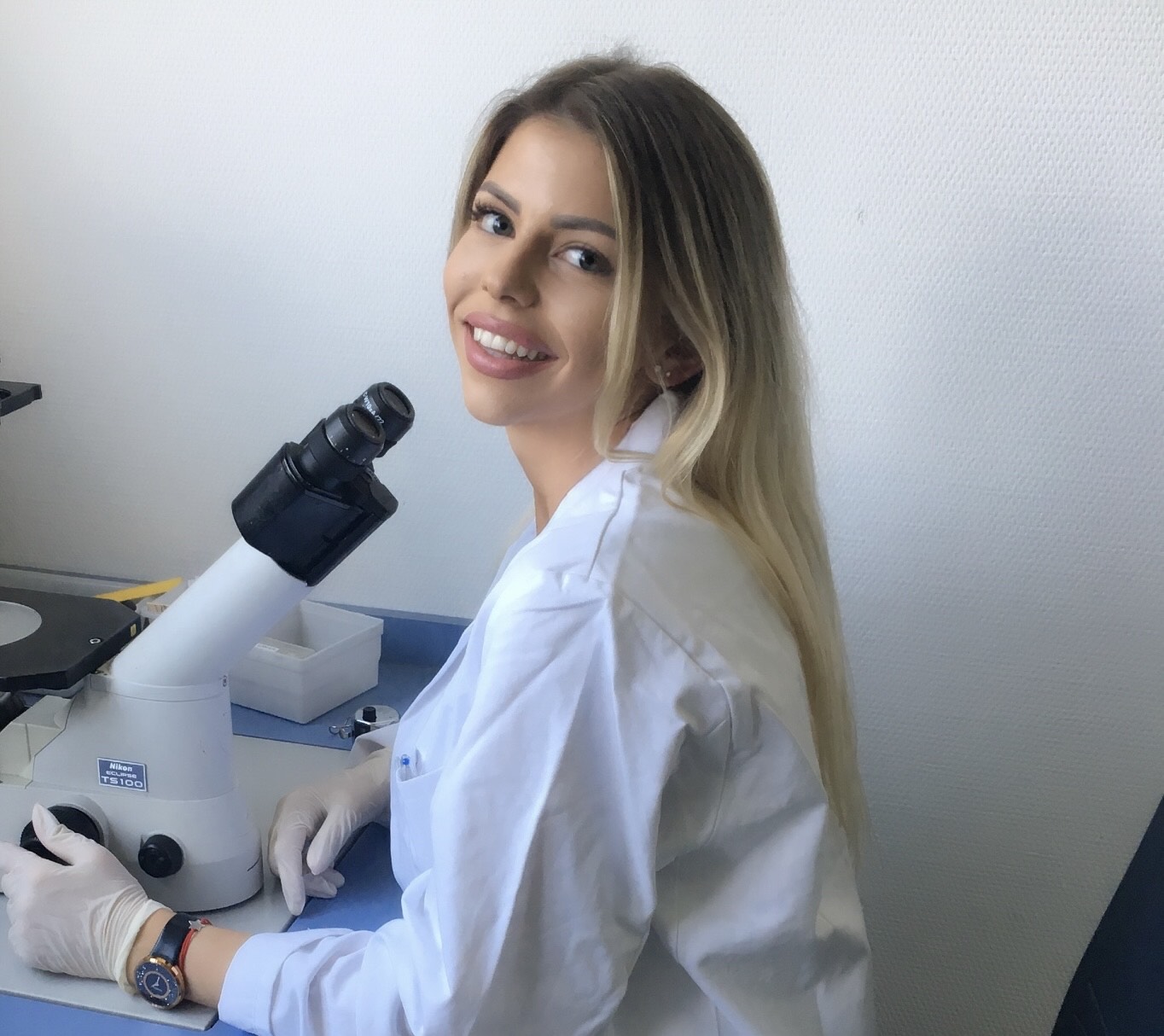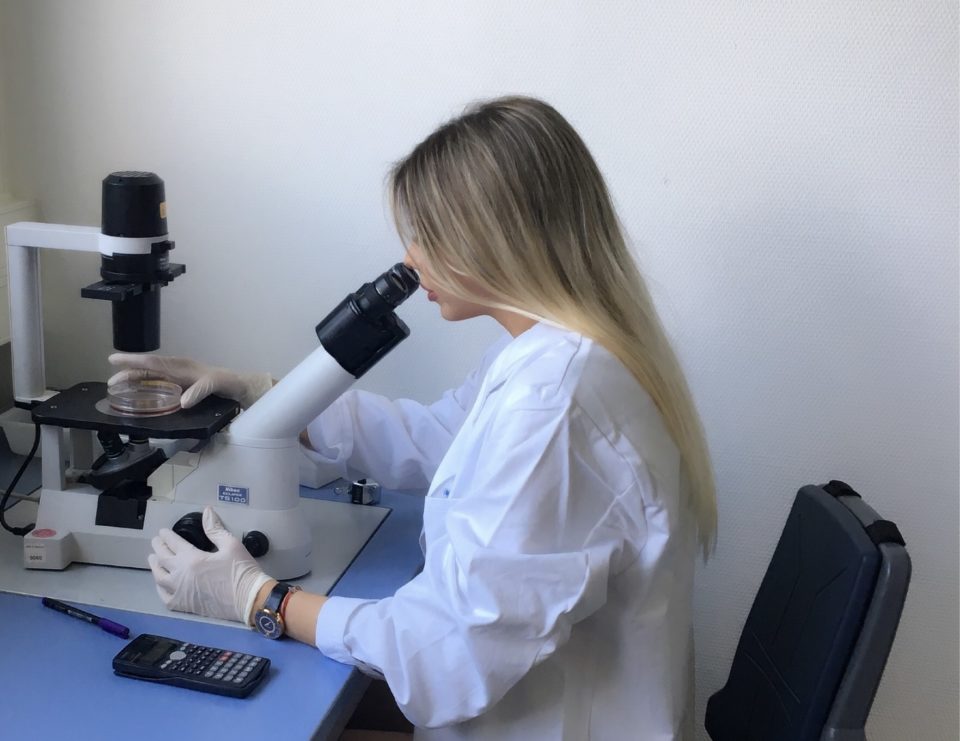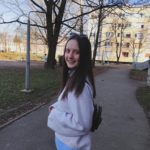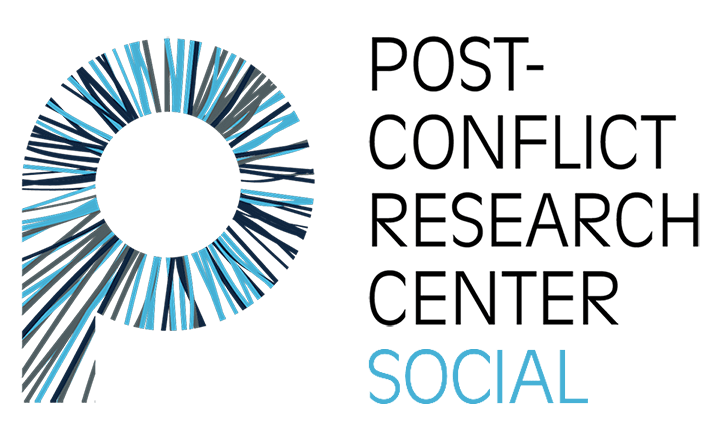
Thirty-two-year-old Mostar native Emina Merdan researches how our cells repair the most dangerous type of DNA damage—double-strand breaks, which, if not repaired properly, can lead to mutations and the development of various diseases
She has identified new factors that affect the precision of repair and discovered a unique process undertaken by cells when damage occurs in active genes. Her work contributes to a better understanding of how cells renew their genetic material to protect the organism from permanent harm.
Dr. Merdan first became interested in genetics in high school, because she realized that our traits and health depend on DNA molecules. Curiosity about “how life works from the inside” propelled her towards molecular biology.
She completed her undergraduate studies in genetic engineering at the University of Sarajevo Faculty of Science and Mathematics. She then continued her education at the University of Bologna, where she completed a master’s degree in bioinformatics, followed by a doctorate in molecular biology at the University of Darmstadt.
“My educational journey was challenging, and it required a lot of work, sacrifice, and adaptation. What started as curiosity turned into a life calling, and the feeling that I’m working on discoveries that can contribute to people’s health gives me infinite motivation,” said Dr. Merdan.
Her research focused on non-homologous junction repair (NHEJ), which is one of the main mechanisms by which cells repair double-strand breaks in DNA molecules. The key findings of her doctoral dissertation show that when double-strand breaks occur in genes, our cells activate a complex repair mechanism. This includes DNA resection, a process in which the cell cuts off the damaged ends at the break site, as well as transcription, or gene rewriting, which further aids successful repair.
After that, cells use another complex mechanism to synthesize new DNA at the sites of double-strand breaks and restore the original sequence, thus protecting us from mutations and genomic rearrangements that can lead to various diseases. She discovered that in the resting phase (G0) and growth phase (G1) of the cell cycle, our cells maintain genomic integrity, preserving DNA stability and repairing genes without errors.
“These studies are important because improper DNA repair is the root of many diseases, including cancer and neurodegenerative disorders. Understanding these processes opens the way for developing more precise therapies and diagnostic methods. The path to discovery required a combination of several methods, from classic biochemical analyzes to modern molecular techniques,” Dr. Merdan noted.
Understanding this process is both fundamental to biology and has practical value in medicine, as, for example, tumor cells often rely on this mechanism to survive chemotherapy and radiation.
The Need for Patience and Knowledge in Equal Measure
“If DNA breaks are not properly repaired, they lead to mutations that cause cancer, immunodeficiency, and accelerated aging. So, this mechanism is a kind of first line of defense for the genome. If you learn how to selectively block their NHEJ, therapy can become much more effective,” explained Dr. Merdan.
The biggest obstacles she faced during her research were technical ones, namely optimizing her methods and finding reliable approaches to experiments. “I learned that in science, patience often has the same weight as knowledge,” she reflected.

For Dr. Merdan, every unexpected result was an opportunity to rethink her methodology, ask new questions, and come up with creative approaches to solving problems. “Through these challenges, I developed the ability to think critically, to adapt and persevere, but also to see every problem as an opportunity for learning and growth. Progress in science rarely follows a straight line. Even ‘wrong’ results contribute to understanding and bring you closer to the solution,” she emphasized.
Dr. Merdan currently heads the Research and Development Department at Bio-Gram Diagnostics, which is focused on developing innovative diagnostic methods that enable faster and more accurate disease detection. Here, she oversees research projects and develops new reagents, methods, and protocols to detect disease. This work extends to ensuring that diagnostic methods are ready for implementation in medical practice and that the company’s products are safe, reliable, and applicable.
Driving Dr. Merdan’s work is its direct impact on people’s health, as earlier and more precise disease detection gives patients a better chance for successful treatment. “That experience gave me additional motivation to continue my career towards where science and medicine intertwine,” said Dr. Merdan, adding that working at Bio-Gram has allowed her to see how science really changes people’s lives.
Helping Bosnian Youth
In addition to her scientific work, Dr. Merdan is also involved in the Bosnia and Herzegovina Futures Foundation, an organization that connects Bosnian students with experts around the world. Through this foundation, she mentors students from BiH who want to build a career in science, technology, and research. Their joint projects and workshops aim to show young people that they are not alone and that their dreams are attainable.
“In this process, I share not just knowledge but also experience on dealing with the challenges of studying abroad, looking for scholarships, and building a network of contacts,” said Dr. Merdan. She emphasized her desire to give back to her community at least part of what she received through her education, and described the movement as building the future of Bosnia and Herzegovina.
After years dedication to science, Dr. Merdan is looking towards the future—towards developing more precise diagnostics, strengthening international cooperation, and supporting young scientists from Bosnia and Herzegovina.
“Science isn’t a sprint, it’s a marathon. The path of a researcher is often full of obstacles, but every challenge hides an opportunity for growth. The most important thing is to follow your curiosity and not be afraid of mistakes, because they’re an important part of the journey, and every one of them carries a valuable lesson,” she said.
Dr. Merdan stressed the importance of finding a mentor and community that inspires you: “Inspiration and support often make all the difference. Science is global and young people from BiH have the same opportunity to contribute as their peers anywhere in the world. Believe that your ideas and effort can change everything.”






